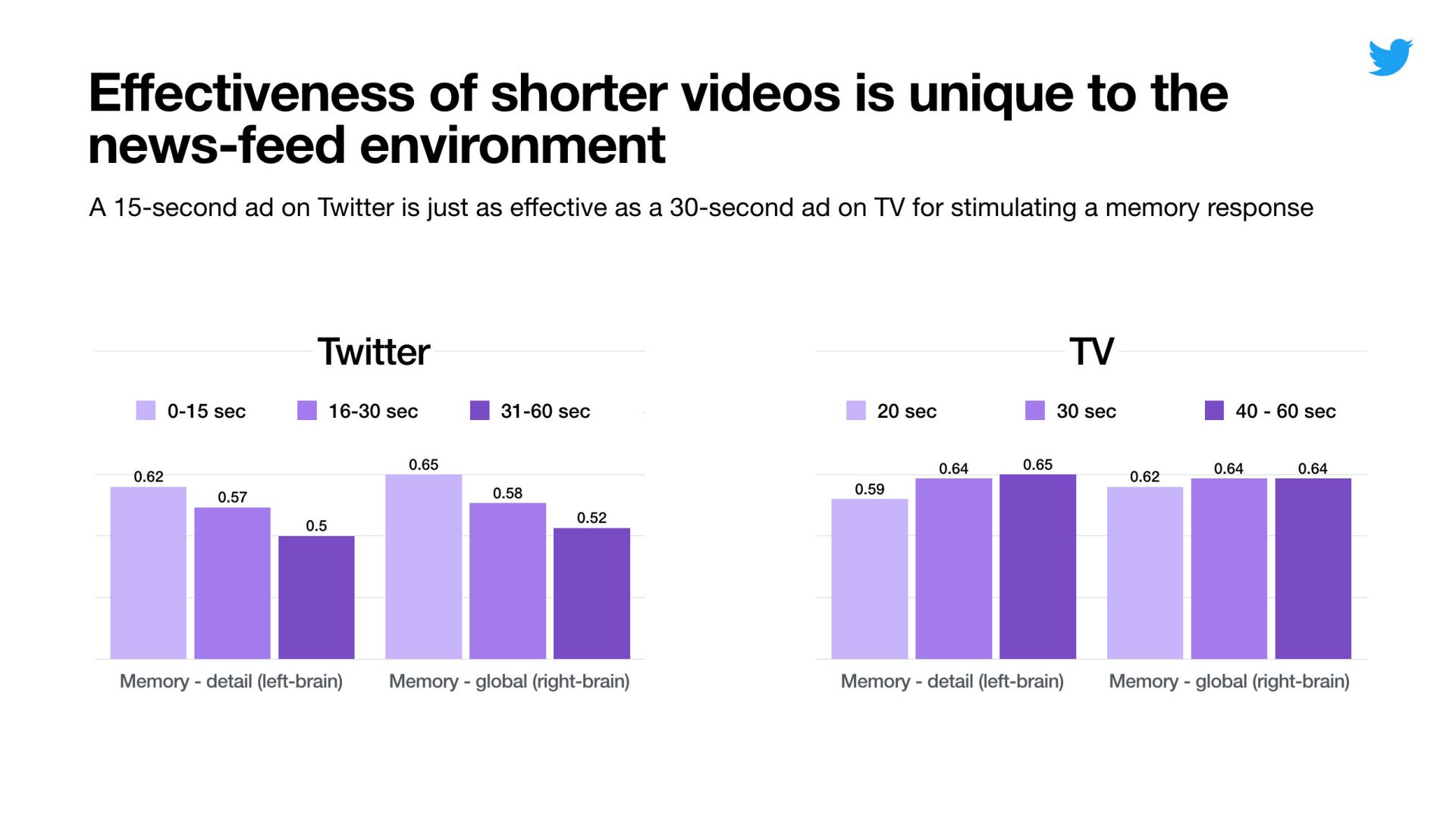Insights
How to create video that captivates on Twitter

Twitter and Omnicom partnered to measure the effectiveness of Twitter Video and identify its unique strengths.
What makes people stop scrolling and start watching video on Twitter? New research reveals what it is that works best in a newsfeed environment and how effective brand video can be. We partnered with Omnicom Media Group (OMG), testing 17 of its brands over seven verticals, and used neuroscience to measure brain activity as select Twitter users browsed their timelines.
This technique generated metrics like memory encoding, which correlates with purchase intent, and personal relevance. The study, conducted for Twitter by research agency Neuro-Insight, also highlights that video on Twitter considerably outperforms online norms.
1. Why brand video on Twitter works:
Twitter video ads elicited a high response and the nature of the platform drives this result. These results show how they outperform online video norms.
The strong results here show that people on Twitter personally identify with what they see, take in details at speed, and can process it effectively.
Brand video on Twitter is super-native. We saw similar levels of response to brand video as for general Twitter activity. An aligned neuro-state between ads and surrounding content means people are receptive to brands they see.
Video is effective within the timeline. Autoplay viewing within the timeline generated slightly higher memory responses versus videos watched full-screen. This viewing experience is impactful for brands who also benefit from branding and Tweet copy being visible.
The Twitter video study highlighted the power of a personally relevant medium like Twitter as a means of driving strong engagement with video content.
2. You need less time on Twitter and a sound-off strategy is key.
We gained insights on key questions around ad length and impact of audio, showing the uniqueness and efficacy of the Twitter newsfeed environment.
Less is more … memorable. Shorter videos of 15 seconds or less are more likely than videos of 30 seconds to drive memory encoding. This is specific to Twitter as TV sees the opposite trend with 30 seconds being most effective versus shorter formats. The nature of scrolling behaviors means less time is needed on Twitter to capture attention and make an impact.

Sound off works. The first three seconds of video doesn’t need audio to capture attention and drive response — personal relevance and memory encoding were at the same level whether sound was on or off. But when someone watches the whole video, sound turns up all the key metrics — and dialogue has more of an impact than music.
3. Changes in receptivity can be harnessed.
There are also implications for planning when to reach people on Twitter.
Receptivity is strongest at the start of a Twitter session. The first video seen in the timeline generates, on average, a 22% uplift across all metrics versus all subsequent videos viewed. This supports the effectiveness of First View, which gives a video top placement for 24 hours.
Mindset and response differs across the day. In the morning, Twitter is most likely to elicit a feeling of personal relevance and generate detail-oriented memory encoding. Later in the day a more emotional/bigger picture memory response is seen. This means there is a great opportunity for brands to align content with these different mindsets. For example brands should think about sharing tips and useful information during the morning.
4. Get people to stop scrolling and watch.
We also found that there are creative attributes in video that make people more likely to stop scrolling and watch:

An early story arc means the video is 58% more likely to be viewed past three seconds (versus all other videos tested). It also elicits higher brain response across all metrics for the duration of the ad.
Topical content is 32% more likely to be viewed past three seconds and leads to 11% higher completion rates (versus all other videos tested). Aligning to something culturally relevant or time-specific triggers the brain to respond since there’s a level of familiarity.
The presence of people in the first three seconds of a video has a huge impact on the emotional intensity viewers have with the content: +133% versus videos without people. We know that driving emotion is important because high levels of emotional intensity are often followed with periods of memory encoding (thank you, electrode caps).
Text or subtitles draw people in. Moreover, videos with text are 11% more likely to be viewed and generate 28% higher completion rates. With a sound-off strategy in mind, the use of text in video is a very effective creative approach.
In summary, content needs to be tailored for the timeline environment. This doesn’t mean creating completely new assets, but there are adaptations that can be applied, which will have a significant impact.
Methodology
The study was undertaken in partnership with the Omnicom Group and involved 127 participants aged 18-49 and was conducted in September 2016. The participants had their brain activity scanned second-by-second as they browsed their Twitter timelines and watched videos on their personal mobile device. The research was structured into three phases: 1. natural browsing of Twitter, 2. natural browsing of Twitter but with specific videos piped into timelines, 3. forced view of specific video content.
The study included 17 OMG brand videos (and three others outside of OMG) — spanning seven verticals. In all, 130 hours of Twitter usage was recorded and two billion data points.
Neuro-Insight conducted the research using Steady State Topography (SST), which is a brain imaging methodology. Like EEG, SST measures electrical brain activity in different parts of the brain. However, it measures neural processing speed as opposed to the amount of electrical activity, making it more robust and more sensitive. Only one reading is needed from each respondent, and research can be carried out in a normal room. SST is unique to Neuro-Insight, who pioneered its use in academic research before extending into commercial operations. All the measures used by Neuro-Insight in market research are based on scientific data that has been extensively investigated and peer reviewed.
For more information on this research, contact Lisa Cowie.